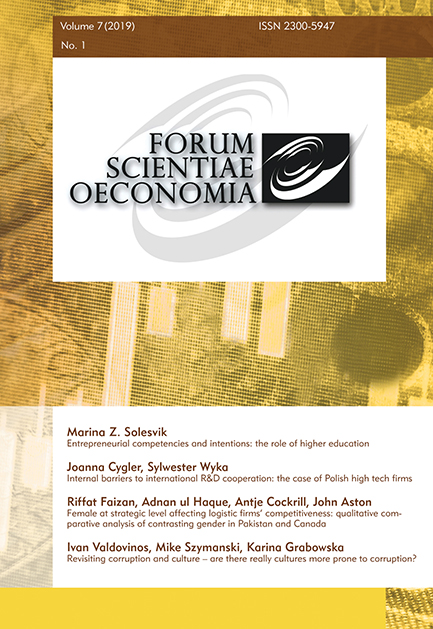Revisiting corruption and culture – are there really cultures more prone to corruption?
Revisiting corruption and culture – are there really cultures more prone to corruption?
Author(s): Ivan A. Valdovinos, Mike Szymanski, Karina GrabowskaSubject(s): Corruption - Transparency - Anti-Corruption
Published by: Wydawnictwo Naukowe Akademii WSB
Keywords: Corruption; cross-cultural differences; cultural dimensions; transparency
Summary/Abstract: Corruption, i.e. an abuse of power by a person in a position of authority in exchange for personal benefits, is a major challenge in international business. It increases the cost of doing business and discourages foreign direct investment (Cuervo-Cazurra, 2006). Due to its importance to international business, corruption has been the subject of numerous theoretical and empirical studies which aim to ascertain its antecedents and predictors. National culture (or certain dimensions thereof, in particular) has been found to be a strong predictor of high corruption levels. In this study, we revisit Husted’s (1999) and Seleim and Bontis (2009) seminal articles on the relationship between the dimensions of national culture and the perception of corruption. We retest their hypotheses using newly available measures of culture (the GLOBE Project) and a larger data set (1120 country-year observations) and go on to develop and test a follow-up hypothesis about the role of future orientation as an important predictor of the level of corruption. We juxta- pose our results to the original ones and other key studies in the literature on corruption and culture.
Journal: Forum Scientiae Oeconomia
- Issue Year: 7/2019
- Issue No: 1
- Page Range: 103-120
- Page Count: 18
- Language: English

